Halo 5 is a jumble of half measures, trying to cram in ideas from other games but lacking the courage to change up the series’ formula beyond these superficial shifts. The result is an underwhelming experience that is unlikely to entice new fans while frustrating longtime followers of the series.
Halo 5 casts players as Jameson Locke, a Spartan tasked with hunting down Halo series protagonist Master Chief–who has gone AWOL in the wake of a series of disasters across several human colony worlds. Your mission to find humanity’s greatest hero will reveal a new threat in the wake of the Promethean awakening of Halo 4 while simultaneously waging war against the final remnants of the Covenant empire.
“Wait, what about Master Chief?” you’re probably asking after reading that synopsis. Let’s address the elephant in the room: contrary to Halo Franchise Development Director Frank O’Connor’s insistence, Master Chief is absolutely not the main character of Halo 5. It’s not even close to being a debatable point: of the 15 levels in Halo 5, you play as Master Chief in three of them. Three. That’s right, the “main character” of the game is only playable for one fifth of the entire experience.
Master Chief is absent from so much of the game that O’Connor’s proclamation that he is “the main character and hero” of Halo 5 feels like a panicked PR Hail Mary to quash unhappy pre-release speculation that 343 Industries was testing whether Master Chief could be phased out of the franchise.
I was a big fan of the split narrative of Halo 2, but there are two major differences between that game and the story of Halo 5. First, the single-player campaign was actually more or less evenly split. Counting the game’s tutorial mission, Master Chief was playable in only one more level than the Arbiter, allowing both characters to develop separate but parallel story lines that were woven together perfectly towards the end of the game.
Second, the Arbiter was an interesting character; Spartan Locke is not. Whereas the Arbiter gave players a first-hand look at the Halo universe from the Covenant’s perspective, Locke is just a generic Master Chief wannabe. Without spoiling the story, it’s even more of a shame that players are left playing the straight-laced, by-the-numbers Locke for most of Halo 5 considering how personal the game’s plot is from Master Chief’s perspective.
It’s not just Locke, either. There isn’t a single interesting or well-developed character among the game’s cast. None of the Spartans accompanying you through the campaign, whether as Locke or Master Chief, bring anything of value to the narrative. They exist solely to shout out inane battle chatter and ’80s movie one-liners. Even dependable fan favorite Nathan Fillion falls flat, coming off as annoying rather than funny or charming. I can’t even remember most of the supporting cast’s names; the ones I do are only because I heard them so often from being called in battle chatter as they were repeatedly killed.
If the developer wanted to replace the Master Chief as the hero of Halo 5, they should have just said so and focused on fleshing out Locke’s character to invest players in him fully. Instead, we’re left with a boring protagonist devoid of any connection to the previous games who seemingly only exists as a stand-in for Master Chief while MC’s off actually figuring out what’s going on behind the scenes.
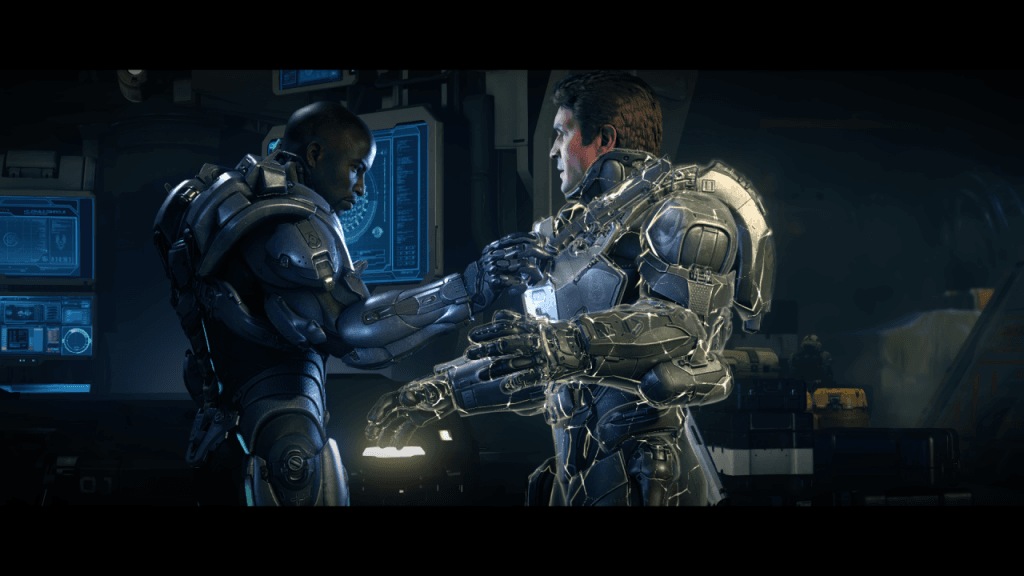
“Hey Locke, did you hear the one about– *BZZZZZT*” Captain Serious Business has no time for your foolishness, Nathan Fillion.
Halo 5 is also saddled with absolutely terrible AI for both enemies and friendly characters. It isn’t just the worst AI ever seen in a Halo game; I’ve played budget shooters with more competent digital friends and foes. Your squad mates are absolutely useless, mostly just standing at the periphery of every gunfight and occasionally firing in the general direction of enemies. You can give them simple commands to move to a specific spot or attack a certain enemy, but doing so is more of a liability than a help.
Your teammates seem incapable of simple actions like firing at the same time as they are moving, making them big, juicy targets as they trot through the open if you tell them to move somewhere or attack. You can actually see the game’s AI gears desperately grinding each time you tell them to do something, as there is a delay of several seconds between issuing a command and them actually responding to it as their simple AI struggles to comprehend. I’ve watched teammates standing literally a few feet away from me pondering my request for help when I’ve been downed, dying at their feet because the game just couldn’t process a simple command fast enough.
There’s an Internet-famous phrase describing the idiotic AI of friendly marines in Halo 3; the Spartans of Halo 5, supposed super soldiers and the greatest warriors humanity has to offer, are even dumber.
Enemies don’t fare much better. They are much duller than in past games, which 343 Industries compensates for by just throwing greater numbers of them at you at a time. As I mentioned, Halo 5 has a down-but-not-out state now if you take enough damage, keeping you alive but unable to fight or move for a few seconds. Co-op players or the game’s friendly AI can revive you, and the whole dynamic of the game seems to have shifted with this feature in mind. Masses of enemies ganging up on you and bosses that can kill in one hit will see you going down repeatedly in missions.
It’s a vicious cycle of stupid enemy AI being supplemented by overwhelming numbers, which the friendly AI is wholly unfit to counter. By the end of the game, I viewed my teammates as little more than unreliable walking healthpacks.
The whole game feels designed for co-op rather than solo play, and Halo 5 is admittedly more enjoyable when you can rely on actual thinking human companions rather than AI squadmates. A recurring boss is fought multiple times throughout the game, and the experience boils down to trying to get behind him to shoot a giant glowing weak point on his back. This is much easier to do in co-op, as when playing alone the boss will largely ignore your AI teammates and focus exclusively on you, making flanking difficult.
Many times boss battles degenerated into sprinting away from the enemy until his AI gave up interest, then running back and hoping to hit him in his weak spot with power weapons and stun-lock him in his damage animation cycle so you can finish him off and avoid having to repeat the process. Fights against Covenant Hunters and Promethean Knights follow largely the same pattern. It’s tedious and annoying.
The changes to Halo 5′s fundamental combat mechanics don’t help things. The game introduces iron sights aiming for weapons similar to shooters like Call of Duty and Battlefield–except, once again, in an unsatisfying half measure. If you’re shot while aiming down the sights (ADS), you immediately drop your aim, just as you would when using any scoped weapon in previous Halo games. However, since you’re constantly taking fire from the hordes of enemies the game throws at you, precision aiming becomes useless as they drop your sights almost continually.
It doesn’t help that aiming just doesn’t feel as tight as in past games when firing from the hip, despite 343 Industries’ insistence to the contrary. Except players found that was false, as well:
343 Industries Executive Producer Josh Holmes would later walk back the initial statement, claiming that the de-scoping mechanic would balance out any benefit provided by aiming down the sites in multiplayer. Why this mechanic was included in campaign play is baffling. The end result is that after a few levels of dealing with this annoyance, I quit bothering aiming down the sights at all except with sniper rifles, opting instead to use Promethean weapons–whose projectiles home in on enemies if you fire in their general direction–whenever I could.
If the intention was to keep Halo 5′s multiplayer similar to the rest of the series by nerfing the use of iron sights, why include them in the competitive mode at all? It’s also a ludicrous goal, considering the fact that 343 Industries already made massive changes to the multiplayer experience with the addition of the ability to sprint, climb up and over the environment, hover while aiming in mid air, slide, boost dodge, deliver a running shoulder charge, and unleash an area-of-effect melee attack after leaping in the air. All of these mechanics have completely changed the way Halo 5′s multiplayer feels, so why the half-hearted addition of ADS?
The other big change Halo 5 brings to multiplayer is the new Warzone mode, a 12v12 battle on massive maps that feels like a combination of Battlefield and MOBAs like League of Legends or Dota 2. Players battle over control of three capturable bases around the map; capture all three and it will expose the enemy team’s power core at their original base which can be destroyed to instantly win the match. AI-controlled enemies will also spawn around the map, awarding points to whichever team kills them. All the while, players earn points towards increasingly powerful requisitions (REQ), one-time use cards that allow them to spawn with vehicles, ability boosts, and power weapons.
In theory, it all sounds fantastic. In practice, it’s an unbalanced mess. Over the many matches I’ve played, I’ve only participated in one battle that was even remotely competitive. One team almost without fail will steamroll the other; the capture points are deadly chokepoints, making it extremely easy for whichever team is able to dig in and defend two of the three is pretty much going to easily hold on to them for the rest of the match. As they do, their team gains points faster, and individual players start earning REQ points quicker than their opponents, as well. This is before we even get into the fact that weapons and vehicles can all have rare REQ variants, providing more damage, increased armor, and other advantages.
I’ve been on both sides of this multiple times; as the losing team, it’s frustrating to be constantly mowed down by opponents wielding power weapons and vehicles that you have little chance of countering. When three Scorpion tanks roll up on your position and the best your team is able to muster in defense is a couple of Ghosts, you may as well go AFK for the rest of the match unless you’re a glutton for punishment. As the winning team, it’s boring to just pour hellfire on enemies who aren’t any real challenge to you.
The one variable in all of this are the AI enemy spawns, which grant large numbers of points to the team that kills them. The only competitive match I was engaged in saw the team left with only one control point vigilantly hunting down the computer-controlled mobs to keep the match close, but ultimately it wasn’t enough to prevent a loss.
So if you’re not enjoying Warzone, at least there’s traditional Halo arena multiplayer to fall back on, right? Yes, but not with all of the options you’re accustomed to. There is no Big Team Battle (it’s supposed to be added as a free update next week) and consequently no vehicular multiplayer combat to be found outside of Warzone, no Oddball, no King of the Hill, and no dedicated playlist for mainstays like Capture the Flag. The only game modes with dedicated playlists are Slayer (team deathmatch), free-for-all, SWAT, and Breakout (Halo 5′s new one-life per round competitive mode).
There is a Team Arena playlist that includes a mix of Slayer, Capture the Flag, and Strongholds, which tasks teams with capturing three control points around the map to earn points. Of course, there’s no pre-match voting for maps and modes anymore, either, meaning if you’re looking to play Capture the Flag, you may luck out, or you may be stuck playing six rounds of Strongholds in a row and repeating the same map in half of those matches, as I was one evening.
Halo 5 isn’t all bad. Despite the limited options, the arena multiplayer is still as enjoyable as ever, even if none of the maps particularly stand out. Matchmaking also runs smoothly, a welcome relief after the disastrous multiplayer experience of last year’s The Master Chief Collection. The game’s singleplayer story, despite the carboard cutout characters and slow early levels, is intriguing and sets up a universe-changing showdown for the guaranteed sequel. Some of the later missions border on genius in their design; I don’t want to spoil anything, but one level that begins with you defying gravity was a particular standout for me.
The game’s visuals are, disappointingly, a mixed bag, with a number of sacrifices made to maintain the targeted 60fps framerate. Character models can look absolutely gorgeous, but many of the environments seem flat and sparsely detailed. And while the game continues the excellent sound effect work that started with Halo 4′s overhaul of the franchise’s guns and vehicles, the musical score continues to be largely forgettable without Marty O’Donnell at the helm.
Halo 5 was unquestionably a disappointment to me. It feels like a game stuck in time, with 343 Industries wanting to take the series in a new direction with changes to its characters and gameplay but not confident enough to fully embrace these changes and possibly alienate hardcore fans. The end result is a product that didn’t appeal to either my enjoyment of more tactical shooter experiences or my love of Halo‘s old-school shooter feel. The new elements feel half-baked, while the classic Halo experience ends up feeling compromised anyway.
I wouldn’t recommend Halo 5: Guardians to anyone but die-hard fans of the series who absolutely, positively need to know right now the events of the story in this latest chapter. For everyone else, watch and wait to see what changes come to the game (if any) through updates and DLC and pick the inevitable Game of the Year bundle up on sale a year from now if it sounds like things have improved.
Noah Dulis is the Deputy Managing Editor of Breitbart News and co-editor of Breitbart Tech. Follow him on Twitter @Marshal_Dov.
Breitbart Tech is a new vertical from Breitbart News covering tech, gaming and internet culture. Bookmark breitbart.com/tech and follow @BreitbartTech on Twitter and Facebook.

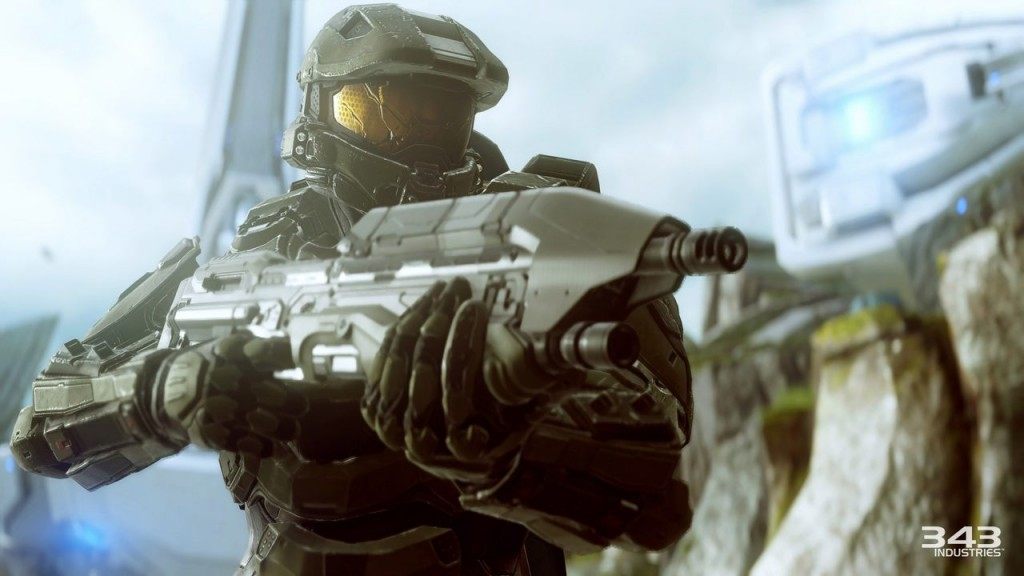
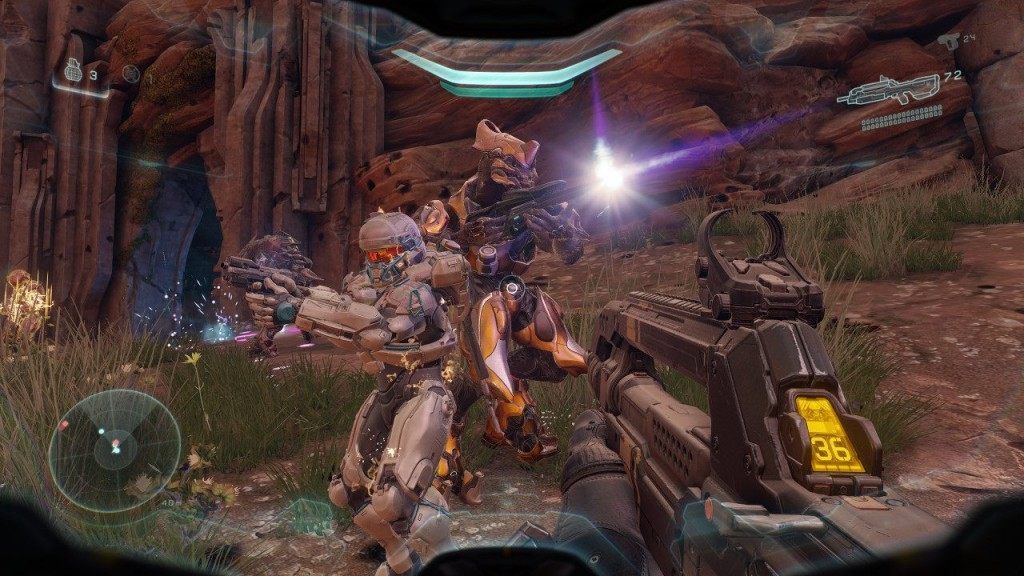
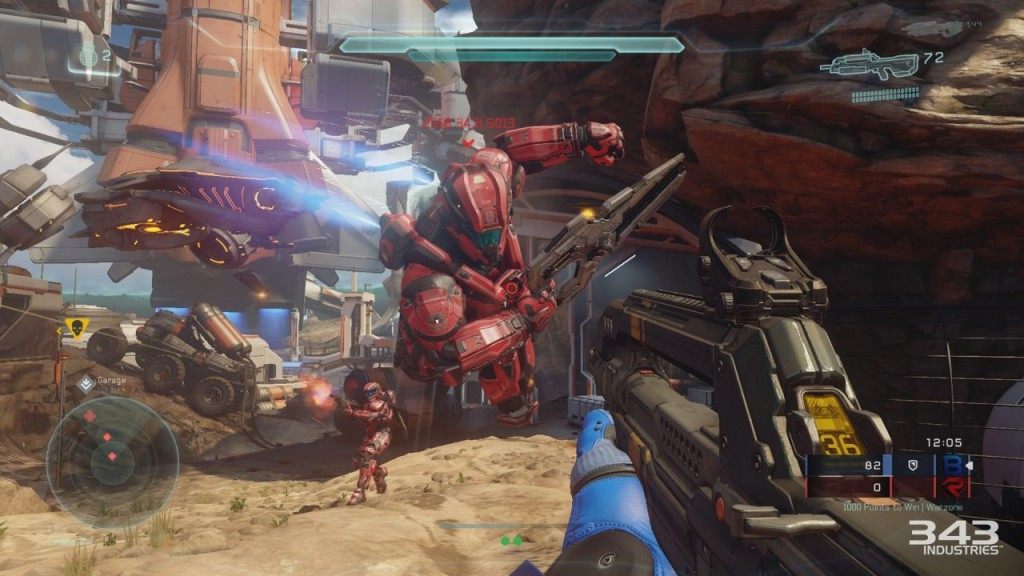
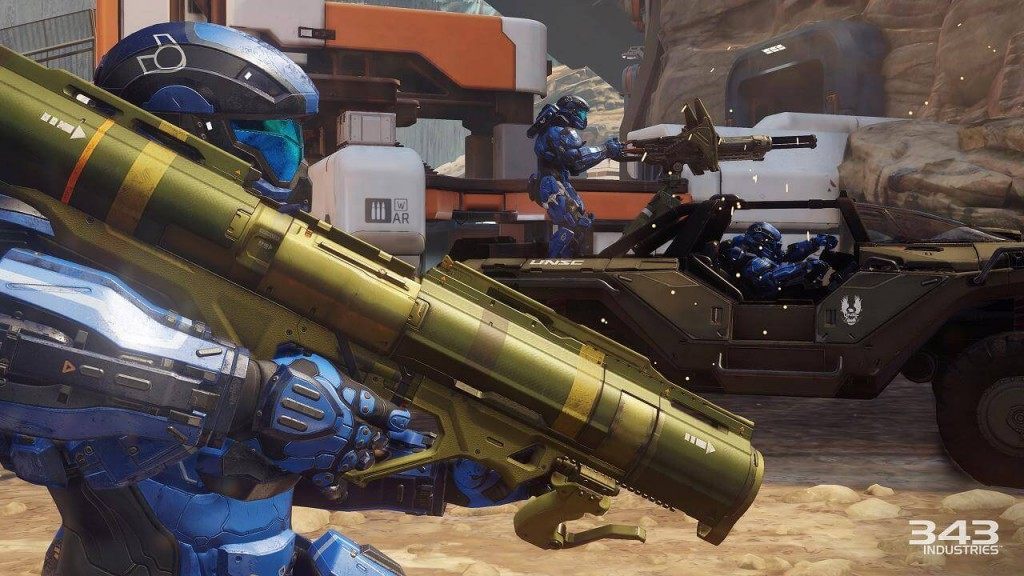

COMMENTS
Please let us know if you're having issues with commenting.